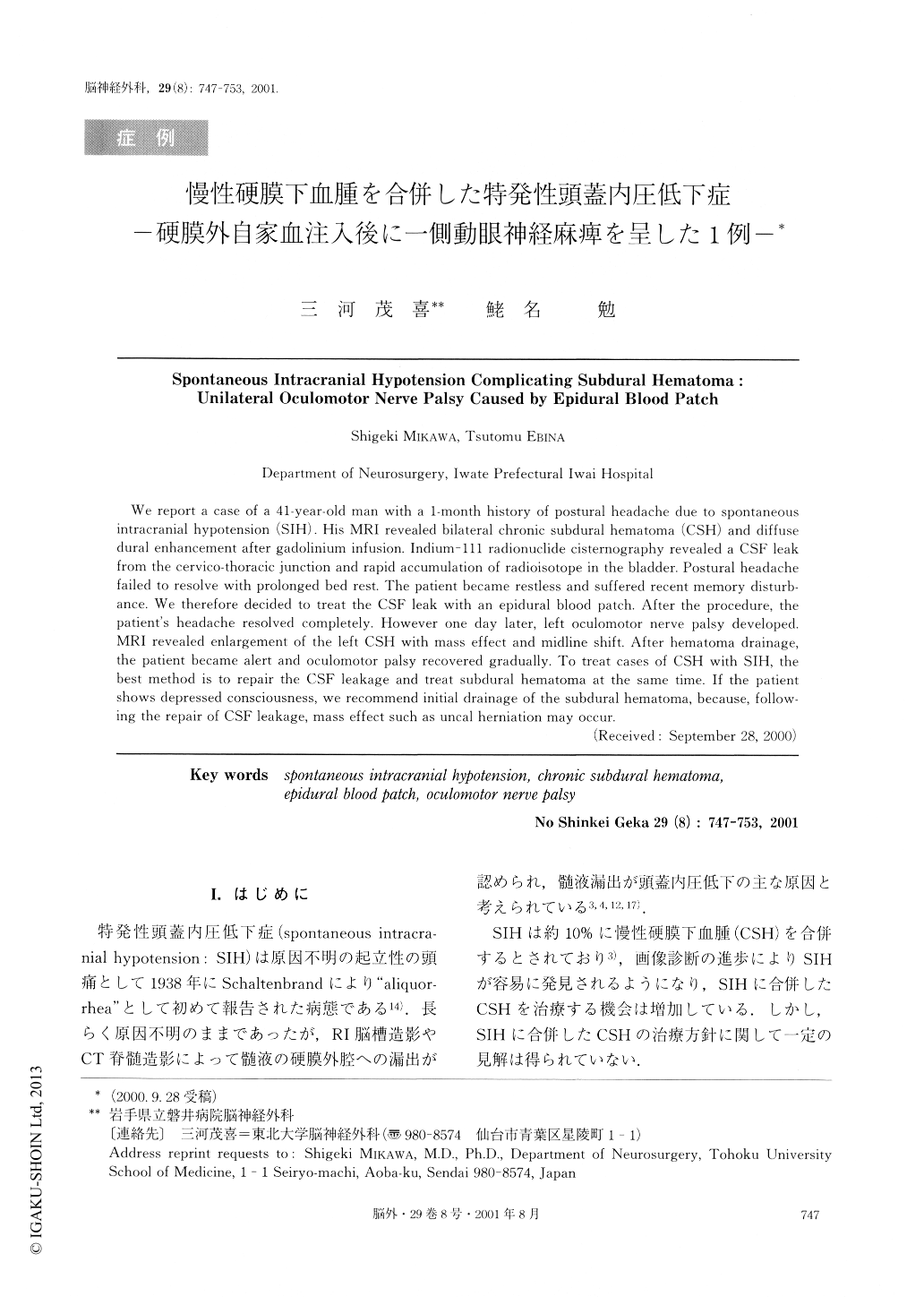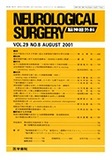Japanese
English
- 有料閲覧
- Abstract 文献概要
- 1ページ目 Look Inside
I.はじめに
特発性頭蓋内圧低下症(spontaneous intracra-nial hypotension:SIH)は原因不明の起立性の頭痛として1938年にSchaltenbrandにより“aliquor-rhea”として初めて報告された病態である14).長らく原因不明のままであったが,RI脳槽造影やCT脊髄造影によって髄液の硬膜外腔への漏出が認められ,髄液漏出が頭蓋内圧低下の主な原因と考えられている3,4,12,17).
SIHは約10%に慢性硬膜下血腫(CSH)を合併するとされており3),画像診断の進歩によりSIHが容易に発見されるようになり,SIHに合併したCSHを治療する機会は増加している.しかし,SIHに合併したCSHの治療方針に関して一定の見解は得られていない.
We report a case of a 41-year-old man with a 1-month history of postural headache due to spontaneousintracranial hypotension (SIH). His MRI revealed bilateral chronic subdural hematoma (CSH) and diffusedural enhancement after gadolinium infusion. Indium-111 radionuclide cisternography revealed a CSF leakfrom the cervico-thoracic junction and rapid accumulation of radioisotope in the bladder. Postural headachefailed to resolve with prolonged bed rest. The patient became restless and suffered recent memory disturb-ance. We therefore decided to treat the CSF leak with an epidural blood patch. After the procedure, thepatient's headache resolved completely. However one day later, left oculomotor nerve palsy developed.MRI revealed enlargement of the left CSH with mass effect and midline shift. After hematoma drainage,the patient became alert and oculomotor palsy recovered gradually. To treat cases of CSH with SIH, thebest method is to repair the CSF leakage and treat subdural hematoma at the same time. If the patientshows depressed consciousness, we recommend initial drainage of the subdural hematoma, because, follow-ing the repair of CSF leakage, mass effect such as uncal herniation may occur.

Copyright © 2001, Igaku-Shoin Ltd. All rights reserved.


